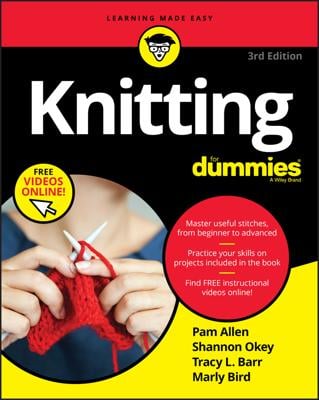When you knit a gauge swatch, you determine if your gauge matches your knitting pattern. A gauge swatch is a small sample that you work using the same pattern, yarn, and needles you intend to use for your project.
It’s important that you use the same yarn for your gauge swatch as for your project, not the same brand in a different color. Different dyes can affect how a specific yarn knits up, and, believe it or not, a yarn in one color can give you a different gauge from the same yarn in a different color.
Cast on the appropriate number of stitches.
In general, cast on the number of stitches given in the pattern for 4 inches, plus 6 more stitches. For example, if the gauge is given as 18 stitches and 22 rows over 4 inches, cast on 24 stitches.
Work in the stitch pattern specified for the number of rows required to make 4 inches, plus 6 more rows.
For the gauge specifications 18 stitches and 22 rows over 4 inches, you work in the given pattern for 28 rows.
Bind off loosely or cut the strand of yarn, leaving an 8-inch tail.
Draw it through the loops of the last row.
Block the swatch in the same manner you plan to use for your finished project.
Your stitches may shrink a bit after you steam the piece during the steam blocking process.
Many patterns often give dimensions in centimeters rather than inches, or include metric measurements alongside U.S. ones. You can calculate inches from centimeters by dividing the centimeter number by 2.5. For example, 10 centimeters divided by 2.5 equals 4 inches. Or just use a ruler with centimeters.
Extra stitches and rows give you a border around the gauge-swatch area you’re measuring. Edge stitches are frequently distorted and shouldn’t be included in what you measure for gauge unless your swatch is a good 6 inches square.

